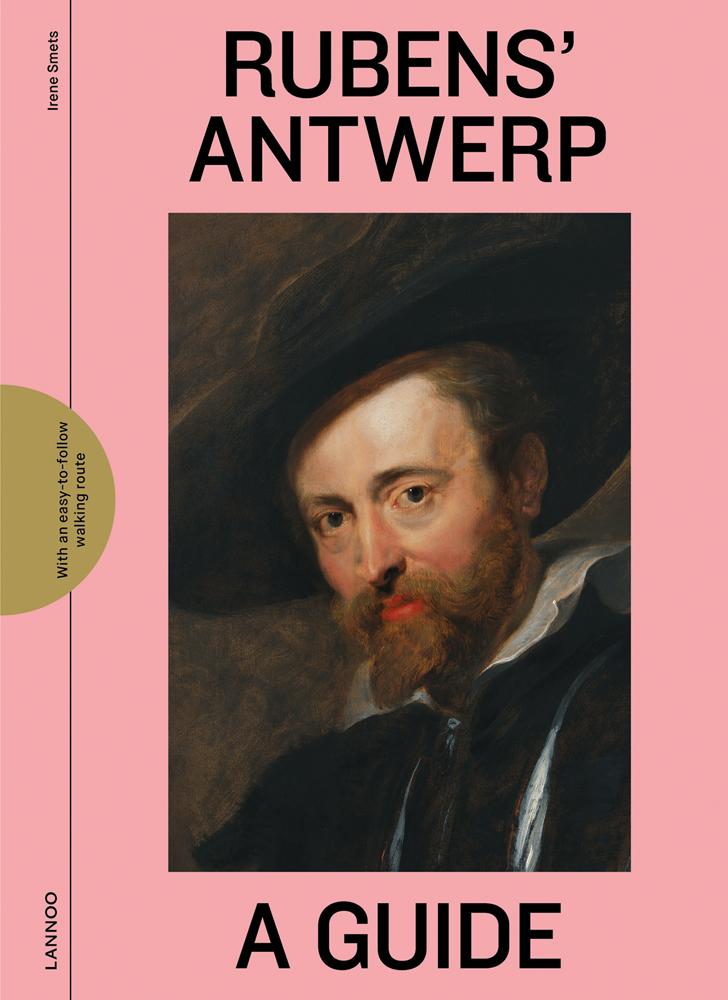
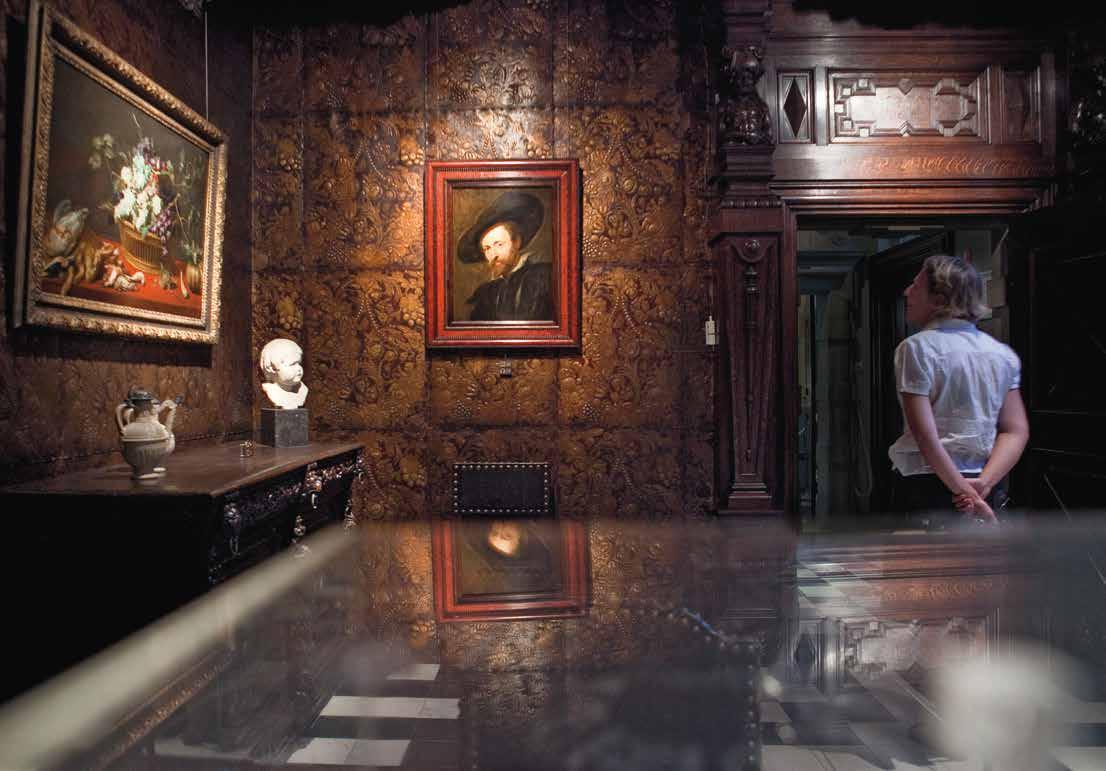




A guide to Rubens’ Antwerp is an ideal companion to discover the artist in the city he loved so much. As well as being a practical guide, which will unerringly lead you to the many great masterpieces made by Rubens in Antwerp, it is also a book that will teach you about the man behind the artist and the fascinating Baroque period in which he lived.
Chronological summary of the most important dates in Rubens’ life
Learn about the life and multi-faceted work of Rubens, the most brilliant exponent of the Baroque










The walk takes you to different places in Antwerp where the work of Rubens can still be seen
Information about Rubens sites of interest


Discussion of the Rubens works you can still admire in Antwerp
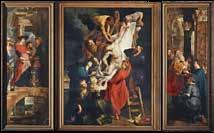
An easy-to-follow walking route on a detachable map that shows all the Rubens sites of interest
With Rubens through Antwerp
Chronological summary of Rubens’ life
Rubens and his time
Childhood
Artistic training and his stay in Italy
A future in Antwerp
The unfolding of a great talent
Protagonist of the Baroque
Spectacular productivity - with the help of his workshop
Major commissions and international fame
A role in European politics
The lyrical period
Discovering Rubens in Antwerp
Royal Museum of Fine Arts in Antwerp
Groenplaats
Plantin-Moretus Museum
Cathedral of Our Lady
Grote Markt
St. Charles Borromeo Church
Snijders & Rockox House
The Emperor’s Chapel
St. Willibrord’s Church
St. Paul’s Church
St. Anthony of Padua’s Church
St. James’s Church
Rubens House
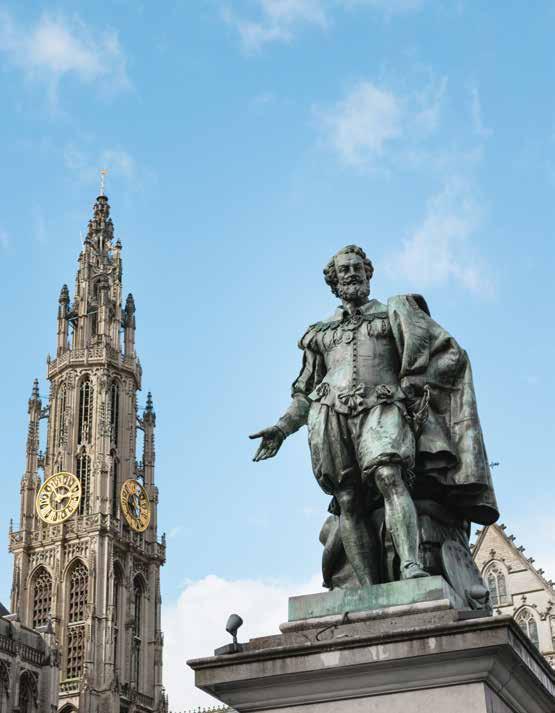

Peter Paul Rubens was one of the most important representatives of the art of his time, the Baroque. More than that, he was also one of the most productive artistic geniuses who ever lived. His talents were remarkably varied: in addition to the magnificent religious and mythological canvases for which he is most famous, he also painted landscapes and portraits, as well as making designs for book illustrations, tapestries, buildings and sculptures. He was an outstanding colourist, who raised the skilled use of a rich palette of shades and tints to a new and important form of expression. He also understood the techniques necessary to create dramatic scenes that were capable of seizing and holding the imagination of the viewer. For this reason, the Romantic French painter Eugène Delacroix once called him the ‘Homer of art’. He found the perfect balance between unbridled imaginative power and well-ordered, harmonic composition. You can find his works in almost all the world’s leading museums, but there is only one city that can truly be described as his ‘biotope’: Antwerp. It is in Antwerp that you can visit his house and workshop, where nearly all of his great masterpieces were crafted. It is in Antwerp that you can find the homes of his friends, Balthasar I Moretus and Nicolaas Rockox. It is in Antwerp that you can admire his canvases in the historical churches and other locations for which they were originally intended. This book is devoted to exploring Rubens’ presence in ‘the city on the Scheldt’. It examines Rubens’ life and the development of his art, and it discusses in depth the artist’s most important paintings that can still be viewed in Antwerp today. In short, the book is a guide to the environment in which one of the world’s great masters of art lived and worked.
Irene Smets
28 June 1577




ca 1591–1598
On the afternoon of the Feast of St. Peter and St. Paul, P.P. Rubens is born in Siegen, Westphalia. His parents, the Antwerp jurist Jan Rubens and Maria Pypelinckx, had fled the Netherlands to escape the violence of war.
The family settles in Cologne.
After the death of her husband, Maria Pypelinckx returns to Antwerp with her children.
Peter Paul is apprenticed as a pupil successively to the artists Tobias Verhaecht, Adam van Noort and Otto van Veen.
Acceptance into the St. Luke’s Guild as a master painter.
Moves to Italy as court painter to Duke Vincenzo Gonzaga; first contact with the Italian Renaissance; in 1603, takes part in a diplomatic mission to the Spanish royal court.
to Antwerp.
Appointed as court painter to Archduke Albrecht and Archduchess Isabella, but is also given permission to remain in Antwerp and work for his own account; marries Isabella Brant.
Receives important commissions, including many for religious works of art to redecorate churches following their destruction in the religious wars; confirmed in his artistic vision as a practitioner of the Baroque style.
ca 1615





Builds an impressive city residence on the Wapper, with a large workshop.
Collaborates with Anthony van Dyck for, amongst other things, the decoration of the Jesuit Church in Antwerp.
After the death of Archduke Albrecht, becomes the political counsellor of the Infanta Isabella, until her death in 1633; both as a diplomat and as a painter, he receives numerous honours and awards from home and abroad.
Commissioned by Maria de Medici to decorate two galleries in the Luxembourg Palace in Paris.
Death of Isabella Brant.
Undertakes diplomatic missions to Spain and London.
Commissioned by King Charles I of England to paint the ceiling decoration of the Banqueting House in Whitehall Palace, London.
Marries Helena Fourment.
Appointed dean of the St. Luke’s Guild.
Buys the Steen estate near Elewijt, where he spends several summers.
Commissioned by Philip IV of Spain to decorate the Torre de la Parada hunting lodge.
Death of P.P. Rubens in Antwerp.


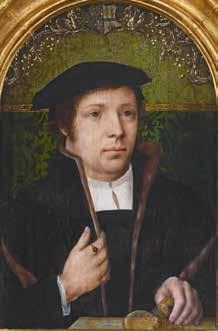
Jacob Claesz. van Utrecht, Bartholomeus Rubens and Barbara Arents, also named Spierinck, 1529–1530. Panel, both 56 x 36.5 cm. Antwerp, Rubens House
These pendant portraits depict Rubens’ grandparents on his father’s side ca. 1529, the year of their marriage. Bartholomeus was a spice merchant and apothecary in Antwerp. Barbara came from a family belonging to the minor nobility. Their son Jan, the father of Peter Paul, was born in 1530.
I knew your brother when he was a child at school and I loved that boy with his sweet and noble nature.
Balthasar I Moretus to Philip Rubens, November 1600

Peter Paul Rubens was born on the afternoon of 28 June 1577 - the Feast of St. Peter and St. Paul - in Siegen, a small town in Westphalia. His parents – the Antwerp jurist Jan Rubens and his wife Maria Pypelinckx – had fled the Scheldt city in 1568. Jan Rubens, who was one of the city aldermen, was suspected of having Protestant sympathies, which could be highly dangerous in those perilous times, when a bloody religious war was being fought out in the Netherlands between the Catholic Spanish overlord and the various supporters of the Protestant cause. The family moved to Cologne, where Jan Rubens became the legal adviser to Anna of Saxony, wife
Abel
of Prince William of Orange, also known as William the Silent, who was one of the leaders of the anti-Spanish resistance. After experiencing a number of trials and tribulations, including a period of imprisonment for Jan, the Rubens household settled in Siegen, but was eventually able to return to Cologne just a short time after Peter Paul’s birth. It was in this city that the future artist spent the early years of his childhood, until he was almost 12 years of age. He grew
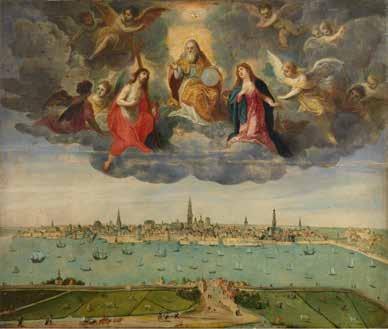
up in a large family with many siblings, but he was particularly close to his brother Philip, who was three years older.
Jan Rubens died in 1587. A short while later, Maria Pypelinckx returned with her children to Antwerp. During the intervening years, the political situation had changed. In 1585, the military commander Alexander Farnese had captured the city for the Spanish king and the Catholic faith. This led to the final and irreversible separation of the Northern and Southern Netherlands. The North was organized as the Republic of the United Provinces,
headed by a Council of State and a ‘stadtholder’. The South remained under Spanish rule and was administered by a governor. Rubens’ mother was allowed to take up residence in Antwerp, provided that she converted to Catholicism.
Unfortunately, the partition between North and South failed to bring peace: both sides continued to harry each other wherever possible. This meant that the young Rubens grew up against a constant backdrop of political and religious division, often resulting in new outbreaks of fighting. To make matters worse, France also intervened in the conflict, in the hope of one day incorporating the Southern Netherlands into the French kingdom. The various phases of this struggle for supremacy in the Low Countries is now known to history as the Eighty Years’ War (1568–1648), a war in which all of Europe would eventually become involved.
Back in Antwerp, Peter Paul attended the Latin school in the Papenstraatje, not far from the Cathedral of Our Lady. There he learnt both Latin and Greek, and later expanded his knowledge of the culture of classical antiquity through his own self-study. When he was 13 or 14 years old, he left school to become a page to Marguerite de Ligne, widow of Count Philip de Lalaing, who lived near the town of Oudenaarde. However, after just a few months he returned to Antwerp to start his apprenticeship as a painter.

Early training in Antwerp
Rubens studied first under the landscape artist Tobias Verhaecht and then under Adam van Noort, a painter of dull and uninspired religious scenes, but neither of these two masters had a far-reaching influence on their pupil’s later development. More significant
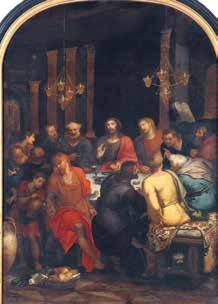
Finally, after he [Otto van Veen] had taught him a great deal in a very short space of time, and when the fame of the renowned pupil had become so great that people no longer knew which of the two was the more skilful, him or his master, Rubens decided to go to Italy.
Roger de Piles, Conversations sur la Connaissance de la Peinture…, Paris, 1677
for his future were the three years he spent in the workshop of Otto van Veen, who was best known for his robust altar pieces and his allegories with mythological figures in a cool and somewhat detached classicist style. Interesting examples of his work in Antwerp can be seen in the Cathedral of Our Lady (The Last Supper, 1592) and in St. Andrew’s Church (The Martyrdom of St. Andrew, 1599).
One of the few surviving works from Rubens’ early years as a painter – The Fall from Grace, sometimes known as Adam and Eve in Paradise (see page 143) – displays strong stylistic similarities with the work of Van Veen, but is more powerful and more plastic in its approach.
In 1598–1599, shortly after completing his training with Van Veen, Rubens was admitted
Otto van Veen, The Last Supper, 1592. Canvas, 350 x 247 cm. Altarpiece for the Brotherhood of the Most Blessed Sacrament. Antwerp, Cathedral of Our Lady
This painting was regarded by contemporaries as the high point of Van Veen’s oeuvre.

Otto van Veen, often Latinized as Otto Vaenius, was born in 1556 in Leiden, where he also received his first artistic training. Out of loyalty to the Spanish king and the Catholic faith, Van Veen’s father, who was burgomaster of Leiden, fled with his family to Antwerp in 1572. However, because the city at that time was largely under the dominance of the reformers, the family moved on to Liege, where the young Otto was apprenticed to the humanist artist Dominicus Lampsonius. Van Veen later completed his artistic education with five years in Rome, following which he returned to the Southern Netherlands, working first for the Prince-Bishop of Liege and later for the Spanish governor, Alexander Farnese. By 1590, he was back in Antwerp and in 1594 he was admitted to the St. Luke’s Guild. It was in that same year (or possibly the next) that the young Rubens joined his workshop as an apprentice. ‘Their shared interest in literature soon led them to become friends and the master willingly passed on all his knowledge and the secrets of his art to his pupil, teaching him above all how to position his figures and to distribute the fall of light to best advantage,’ wrote Rubens’ biographer Roger de Piles in 1677. Van Veen later moved to Brussels, where he died in 1629.
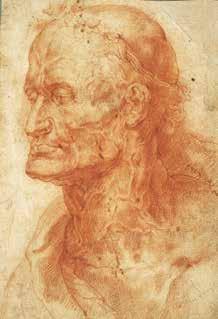
Peter Paul Rubens, Study of the head of an old man, 1600–1608.
Red chalk on paper, 23.3 x 15.5 cm.
Antwerp, Rubens House
as a master to the St. Luke’s Guild in Antwerp. The following year, 1600, he left for Italy to complete his artistic education. He soon found a position at the court of Vincenzo I Gonzaga, Duke of Mantua. In the duke’s magnificent Renaissance style palace, the young Rubens was able to admire the masterpieces of the greatest ‘modern’ artists of his day. Not that he stayed there for long. He was given a degree of freedom by the duke - who was notoriously slow to pay his salary - to travel and to learn as much as he could. Taking advantage of this liberty, he made lengthy sojourns to Florence, Genoa and, above all, Rome. He was eager to expand his artistic horizons
and threw himself into the study of topics as varied as the classical sculpture of Ancient Greece and Rome, the art of the Italian High Renaissance, local architecture and even gemstones. While he was in Rome, he made numerous copies and study drawings of famous classical statues, such as the Belvedere Torso and the Laocoon, but also of the paintings of the great masters of the Renaissance, like Mantegna, Leonardo da Vinci, Raphael, Michelangelo, Titian, Tintoretto, Correggio and others. At the same time, he was open to
Peter Paul Rubens, Equestrian Portrait of the Duke of Lerma, 1603. Canvas, 290.5 x 207.5 cm. Madrid, Prado Museum
new ideas and in particular was fascinated by the Baroque movement, which was bursting onto the scene in Rome at that time thanks to the works of Carracci and Caravaggio. When in Genoa, he collected a large number of architectural plans and facade drawings of the city’s many palaces, which he later engraved and published in Antwerp in 1622 as a book of prints, titled Palazzi di Genova
In March 1603, the duke asked Rubens to accompany a convoy of gifts that he wished to send to the court of the Spanish king, Philip III. These
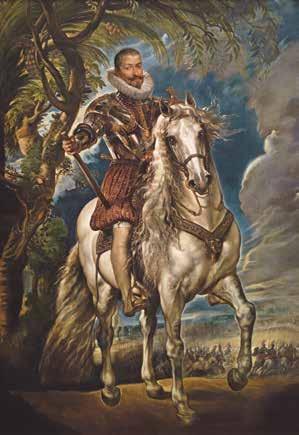

Peter Paul Rubens, The Baptism of Christ, 1604–1605. Canvas, 411 x 675 cm. Antwerp, Royal Museum of Fine Arts
gifts were intended not just for the king, but also for a number of other influential figures in the royal circle, such as the powerful Duke of Lerma. The visit allowed Rubens to discover further works by the Renaissance greats in the king’s collection, especially Titian, but it also gave him an excellent opportunity to impress with his own painting. Whilst in Valladolid, he made his famous Equestrian Portrait of the Duke of Lerma, the lively and lifelike execution of which marks a turning point in the development of his art. After his return from Spain to Italy, he was finally given the major commission he had long been waiting for from Vincenzo Gonzaga, who until then had been content to impose on him tasks of minor importance and copies. This commission involved the creation of three large-scale canvases for the Jesuit Church in Mantua:
Vincenzo Gonzaga and His Family in Adoration of the Holy Trinity (Ducal Palace, Mantua), The Baptism of Christ and The Transfiguration (Museum of Fine Arts, Nancy). During various visits to Genoa at that time, he also painted portraits for members of the aristocracy.
From 1605 onwards, Peter Paul lived mostly in Rome with his brother Philip, who was in the service of one of the Vatican’s cardinals as a secretary and librarian. During his stay in the Eternal City, he made several new works, one of the most impressive of which was for the main altar of the Oratorian Church. When the painting was installed above the altar, it became apparent that it could not be viewed properly because of an irritating reflection. The young artist immediately began to make a new version of the three panels, but this time on slate, a less reflective material.
In October 1608, Rubens hurriedly left Rome
Peter Paul Rubens, Belvedere Torso, before 1608. Pencil and black chalk on paper, 37.5 x 26.9 cm. Antwerp, Rubens House

when he received news that his mother was dying. By the time he arrived back in Antwerp, she was already dead. He had spent eight years in Italy and was destined never to return. Even so, what he had seen there continued to influence him for the rest of his life. The works he made in Italy initially showed traces of what he had learnt under Otto Van Veen, but these were soon merged with and eventually replaced by new creative impulses: the art of classical antiquity, the warm silvery palette of the Venetian School, the influence of artistic giants like Michelangelo, Raphael, Tintoretto, Titian and others. His style became freer, his colours more vibrant and more richly nuanced, and
his compositions more heroically monumental in the manner of Graeco-Roman sculpture. The sketchbooks and design folders he brought back from Italy, packed as they were with drawings and studies of ancient statues and Renaissance masterpieces, later provided him with inspiration for the religious and mythological scenes for which he was to become so famous. Working in combination with sketches made from live models, he used this Italian material as a kind of reference book on which he could draw for the rest of his career. But he was always able to integrate these ‘borrowed’ elements into his canvases in a vivid and original way.
Rubens and his time